Oral language
Children will strengthen their comprehension of information presented in a book read aloud and increase the number of novel words they understand.


New:
Review:
Be Prepared: This is the second of three repeated readings of a book with children. Today’s session focuses on children’s comprehension of information presented in the book, especially connections to children’s experiences. The session also helps children understand more novel words. From the list of novel words you identified prior to your first reading of the book, select 4–6 words to define for children today. Remember, it is okay to select words that a few children may know if you anticipate most children do not understand the word’s meaning. See the Language/Literacy section of the ELM User Guide: 3–5 Years for additional information on how to select and define novel words.
Now let’s spend some time with our book.
[See Week 3, Day 3 of Language/Literacy for a description and examples of how to approach today’s book reading. Key aspects are summarized below:
Geometric and spatial knowledge
Children will identify circles and squares in their environment.


Review:
Be Prepared: Today’s activity will take place outside. If inclement weather or other factors prevent you from going outside, adjust the activity for an indoor setting such as the classroom. Take a camera on the shape hunt described in this activity plan. Pictures taken of items found by children during the hunt can be organized into a class book or posted in the classroom. Pictures will help children recall their shape discoveries.
[Hold up a circle cutout.]
What is the name of this shape? Does it have straight lines or a curved line?
Remember, a circle is a round shape.
[Hold up a square cutout.]
What is the name of this shape? Let’s count the sides together.
[Lead children in unison counting as you point to each side and corner of the square.]
A square has four straight and equal sides. What does the word equal mean? (the same) How many corners are on this shape? (four) Let’s count each corner together.
Today we will go on a shape hunt! We will go on a walk outside to try to find things that are in the shape of a circle or a square. Let’s think about some of the things we might find.
We need to remember that shapes come in all sizes when we go on our shape hunt.
Are a small square and a large square both squares? Yes they are!
[Take children outside on a shape hunt. As they find items and identify the shape, ask how they know it is a circle or square. Describe the shape after they’ve identified it. Example: “Julie found a nut that is the shape of a circle. A circle is round with curved edges.” The goal of the walk is to identify items in the shape of a circle or square. If a child shows interest in another type of shape, support the child’s curiosity by naming and describing the shape. Example: “This is in the shape of an oval. An oval has curved edges like a circle, but it is longer and not round.”]
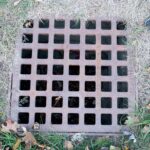
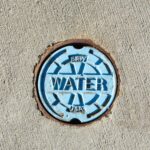
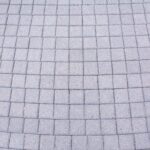
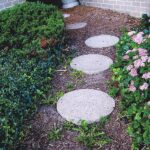
Today we found circles and squares during a shape hunt. We described the shapes and took pictures of them. We found large and small shapes. Circles and squares are two shapes that can be found all around us! We can use the pictures of our discoveries to help us remember the shapes we found.
[Place pictures from the shape hunt in a class book or post them in the classroom. The pictures will be used on Day 5.]
Extra support
Enrichment
Encourage children to find shapes in the block center as they build. Encourage children to match the shapes and describe the shapes they find.
Take children to the park for another shape hunt. There are many opportunities to find shapes at the park! Encourage preschool-age children to look for circles and squares as school-age children look for shapes, such as ovals and diamonds. Invite children to describe the shapes they find as they share their discoveries with each other. For added fun, pair younger and older children as they together complete a shape hunt. Give each pair of children a shape to find. Gather children together after each pair has found their given shape, and encourage each pair to name and describe the shape they found.
Inquiry skills
Children will strengthen their understanding of how to make a prediction.


Review:
Be Prepared: Select up to four different types and/or sizes of magnets that will stay on a magnetic board placed in a vertical position (not flat). Providing at least two different types and/or sizes of magnets is necessary for children to compare the strengths of different magnets.
We are learning how to make predictions. We know a prediction is an idea of what might happen. On Day 2 we tried out our prediction that a magnet would attract things made of metal.
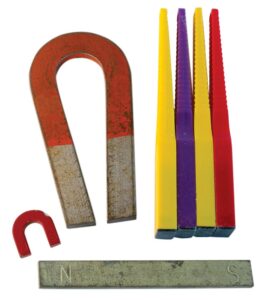 [Display magnets.]
[Display magnets.]
There are different kinds of magnets. Some magnets are very strong and some magnets are not very strong.
We know that magnets can hold paper or pictures on a refrigerator. Most magnets on a refrigerator can hold up 1–2 pieces of paper or pictures. Some magnets can hold up even more paper or pictures! A strong magnet can hold a lot of paper or pictures.
We have different types of magnets. Some (or one) of our magnets may be stronger than other magnets (or another magnet).
Do we know what type of magnet is the strongest? (no)
We can figure out how strong each of these magnets is by seeing how many pieces of paper each magnet can hold on the magnetic board. The strongest magnet will hold up the most pieces of paper.
[Invite volunteer children to help place each magnet on increasing numbers of paper on the magnetic board.]
We learned something about magnets by exploring how many pieces of paper each magnet can hold on our magnetic board. We can use what we learned to make a prediction about what a strong magnet looks like.
[Use characteristics of the strongest magnet to discuss a specific prediction with children. Example: “Our strongest magnet is larger than our other magnet(s). We could predict that larger magnets are stronger than smaller magnets.”]
Today we learned that some magnets are stronger than others. We found out which magnet was the strongest by seeing how many pieces of paper it would hold up on the magnetic board. Then we made a prediction about what the strongest magnet looks like.
 Extra support
Extra support
Enrichment
Provide several plastic water bottles with various magnetic items in them. Invite children to use the magnets from today’s activity to move the items in the bottles. Encourage children to think about which magnet is the strongest. How do they know? (it moves more items)
Pair preschool-age children and school-age children to find the strength of different refrigerator magnets. Give each pair several pieces of paper and invite them to find the strongest refrigerator magnet. Ask children how they know it is the strongest. Also, invite all children in your setting to look for items outdoors that a magnet may attract. Encourage children to first make a prediction about the item and then try out their prediction. Invite school-age children to make a book about the items the magnet attracted. Place the book in your book area for all children to enjoy.
Getting Along With Others
Social-Emotional
Skill and Goal
Relationship skills
Children will broaden their understanding of how to cooperate with each other.
Materials
Needed
*Printables provided
Key
Concepts
New:
Review:
Also
Promotes
Self-Regulation
We are learning that cooperation means we work together. On Day 2 we played Musical Chairs. How did we cooperate when we played Musical Chairs? (shared a chair)
Another way we can cooperate with each other is to take turns. Who can tell us about a time you shared by taking turns with someone? (playing with a toy, playing a game)
[Display picture of quilt.]
What can you tell us about the quilt in this picture? (different colors, many pieces, etc.)
[Put quilt frame (paper) on the floor for all children to see. Position the item so children can work on the quilt from each side. Put coloring tools in one or several containers. Provide a limited supply to promote sharing of coloring tools.]
Let’s look at what we will use to make our quilt. The large piece of paper on the floor is made up of smaller squares. We can use the crayons, colored pencils, and markers to color the squares. We can work from any side of the paper to color our squares.
There are many ways we will cooperate (work together) in making our quilt.
[Invite all children to a large group discussion. Make sure all children can see the finished quilt. Below are some suggested areas to discuss:]
Scaffolding Tips
Extra support
Enrichment
Center Activity
Invite children to do a “partner painting.” Pair children with one piece of paper and encourage them to cooperate in painting a picture together. If you anticipate that this approach to “partner painting” might be too challenging for some pairs of children, provide one sheet of paper with tape down the middle. Encourage children to paint on either side. This arrangement may lead to two different paintings on a divided piece of paper but it promotes cooperation in sharing a page and materials. Also, some children may benefit from your providing a simple picture of an item to paint such as a flower. Before children begin, encourage members of each pair to discuss what they would like to paint together. Encourage discussion of which parts of the painting each child will do.
Family Child Care
Invite preschool-age and school-age children in your setting to make an Family Child Care family quilt. Send larger squares of paper home with children and invite families to work together on their own family square. When each square has been completed, tape or glue them together to create a family quilt. Hang the quilt somewhere where families can see it.